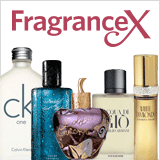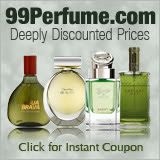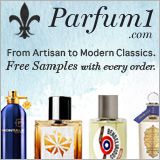 By DonnaF
By DonnaFor many years, since it first opened in fact, I have been a loyal and appreciative customer of
The Perfume House in Portland, Oregon. I have bought some of the finest fragrances the world has to offer, and enjoyed countless others over the years when I would try dozens of scents each visit, yet never getting close to the bottom of the dazzling array the shop offers. New temptations beckoned constantly and old favorites were fondly revisited. However, in all that time there was one thing I had never done. I had never attended a showing of the Private Reserve collection, and it was high time to do it.
I had been on the list since early summer, and several months passed before I got The Call: there was an open slot for an upcoming event and would I like to attend? Would I ever! I was in high anticipation mode all the following week, waiting for the day. At last, I would get to find out what all the fuss was about. Could they really be that good? Well, if the entire collection were even half as good as the two I had already sampled, it would be plenty. The first one I will be talking about later; the second was the newest addition, a Tuberose soliflore so stupefyingly wonderful that it made me even more eager to try all of them.
I arrived at the shop along with a small group of people, ranging from longtime customers like me to a woman who had only been to the shop once before. One of the reasons it takes awhile to get a spot is that the shop can only accommodate small numbers of people at a time; it is not very large and it is crammed with so many perfumes, soaps and other goodies that every inch of space is used. A couple of people had attended a showing before, but most of us were wide-eyed neophytes to the inner sanctum.
Before the showing actually started, the owner, Chris Tsefalas, told some of his wonderful perfume stories and gave us the background of how the Private Reserve collection came to be. Master perfumers created all of the many scents in the collection over many years, and all of the essences originate in France. The French Perfume Council controls the formulae, which are closely guarded secrets. The oils used in these perfumes are also very special, as they are never released for use in commercial perfumery. The reason for this is that each and every one of the scents was originally a private creation, commissioned by a family or an individual, including members of European royal families. These oils are still owned by the families, and a certain quantity has been released to be sold to private customers. We were going to be experiencing perfumes worn by Romanovs, Hapsburgs, Bourbons, and wealthy aristocrats going back some two hundred years and even more. Only the best ingredients would do for people like this, of course, and the other unique feature that vaults these perfumes head and shoulders above commercial fragrances is that they contain no alcohol; they are composed only of the finest oils. Chris told us to remember, as a matter of perspective, that the famous
Joy parfum by
Jean Patou, as costly as it is, is only about five percent actual perfume oil. The Private Reserve scents are all one hundred percent oils. This results in a very stable product; they do not change very much at all, so what you smell right out of the bottle and on your skin is how they will remain. This also means that only a small amount goes a long way, so a small bottle will last a long time. (That is the theory anyway; some people use these up very quickly.)
As Chris talked about the perfumes, his daughter laid out the scents on the counters, and put a little bit of each one on a piece of cotton. I could smell wonderful things happening, but it was not overwhelming since there was no alcohol and no spraying. The feminine and masculine scents were in separate groups, and we had handouts listing each perfume in the order in which they were to be tried. I got dizzy just reading the descriptions! I was invited to start first, and I was not shy about it. Finally I would know the finest perfumes in the world!
I began with the women’s perfumes, stopping and savoring each one. There were fifty of these, and what can I say except that they were ALL very good, and that only a very few did not really appeal to me, though I could admire them as masterful compositions. One thing that struck me is how my nose did not need to “rest” in between after I had tried several of them. There was no olfactory overload at all, and I was able to go right down the line and test them all. This of course was due to the absence of alcohol and other additives present in other fragrances, and to the extremely high quality of the perfume oils. Each one had its own perfect clarity to my nose, and each was very distinct unto itself. I will tell you about just a few favorites.
Clelia is described as being for the young or young at heart. Green notes, pineapple, jasmine, rose, muguet, sandalwood and cedar. This one will either make you smile or break your heart.
Semiramis has an Oriental character, but is very soft and not overly sweet. Amber, sandalwood, jasmine, iris, rose, violet, narcissus, ylang-ylang, vanilla.
Yasminale is one of my very favorites and may be the finest jasmine-rose blend in the known universe. Top notes of floral greens and peach, a heart of Moroccan roses and jasmine along with muguet, with a base of sandalwood and musk. It is so very lovely and feminine I can’t stop thinking about it. A perfect fragrance for a bride, it gave me a vision of flying magically through pink clouds floating across the sky on a sublime late summer afternoon.
Fragrance Clair is an airy, refined bouquet, a lovely blend of pink jasmine, muguet, and lilac on a powdery wood and musk base. This is a perfume for a true Lady, or even a Queen.
Rose Etoile is a blend of different roses and honey; simple yet very effective, it is warm, inviting and sensual. This is a comfort scent in the very best sense.
No. 18 de HJ is a mysterious, mossy green scent that is nothing short of addictive. Notes: Vetiver, tree moss, hyacinth, iris, jasmine, seringa, bergamot, musk, amber, myrrh. This one has echoes of my sadly discontinued favorite Green Floral of all time, Jean Patou Vacances. That alone puts it close to the top of my list.
Valentys is an ode to gardenias and romance, so soft and flowery it was like a feather bed made of white blossoms. I just wanted to dive into it.
Marie Antoinette Violette is quite simply the finest violet scent I have ever smelled, most certainly the sexiest one, and it does not “disappear” after a short time like most of them. Violet flowers and leaves are blended with myrrh, frankincense and amber. That may sound like an odd combination, but my knees buckled when I tried it. If you think you don’t like violets, this will change your mind.
Palma is like a breeze blowing over a desert garden, with notes both sharp and sweet; nasturtiums, hyacinth, rose, bergamot, slightly powdery musk, Turkish rose, grass notes and amber. I just sighed when I smelled it.
#4 – That’s the name, just a number, but this one might be my very favorite, along with Yasminale. It is not just fresh and ethereal; it is absolutely transcendent. When I smelled it I was swept away to the time I was privileged to experience a small group of fine perfumes that had been commissioned for the Czars of Russia, and they were made from the very finest materials in France. (This was many years ago and these are no longer available.) I was lucky enough to buy one of them at the time, a green floral/chypre with a name I could not pronounce. Smelling it transported me to a deep green forest where I could feel gentle breezes blowing through the trees and hear the sweet songs of the birds. This humbly named #4 is so very like that one that I can believe it was the base for that perfume! There is nothing else like it in the world, and I could not believe that after all this time I could experience that wonderful fragrance again. The top notes are of wildflowers, muguet, jasmine and orange, with a heart of ylang-ylang and sandalwood. The base notes are woody, along with oakmoss and grey amber. This is a masterpiece by any measure.
Most of the Private Reserve scents are complex blends, but there is a small group of soliflores as well –
Jasmine,
Gardenia,
Fleur d’Oranger,
Muguet,
Tuberose, and several different types of Rose, including
White Rose,
Red Rose, and
Rose O’od, which seems to be a variant spelling of Oud (or Aoud), as it smells a lot like an oil version of the very fine Montale rose scents. All of these are excellent of course, but the star of them all, and of the entire collection, is the heart-stopping
Snow Rose, a very special blend of Oriental roses from the Himalayas. I can tell by the quality of the scent that it is made from Musk roses, a group of rose species with the unusual quality of sending the scent from their tiny flowers into the surrounding air, unlike others that hold on to their perfume and must be smelled at close range. This is a Rose like no other, so soft and pure and pristine, celestial even, that it is easy to understand why the rose is so revered in the Orient and how highly regarded this perfume is. It is a favorite of many famous people and is also greatly esteemed by the master perfumers of the world. (You may have never heard of it before, but they certainly have.) It’s one of those things to put on your must-smell-this-before-I-die list, very close to the top.
Moving on to the men’s perfumes, of which there are twenty, I found a lot to love there too. I would wear many of them myself; none of them have the harshness and brute strength of modern “manly” scents. Some of them could easily be thought of as being meant for women, so refined are they.
Emilio is such a one, with plum, lemon, coriander, ylang-ylang, Turkish rose, cinnamon, olibanum, benzoin, patchouli and sandalwood.
Paccino is more bracing, having top notes of bergamot, lavender and rosemary, with a heart of cinnamon, pine needles and geranium, on a base of amber, cedar wood and honey.
Peluche is a stunner dominated by basil, cumin and green notes, with middle notes of thyme, rose and carnation, drying down to olibanum, leather and cedar.
M. Aquaroc is the best lemon scent I have ever smelled, for either men or women.
Dragonera is so green yet so woody, and so very masculine – vetiver, moss, ivy and lavender, on a base of amber and patchouli - that I would happily pay a man to put it on just so I could smell his neck.
Faissal is fabulous and really different – how about violet, leather and tangerine all in one fragrance? Another favorite is simply called
Fragrance for Men – who said minimalism is a modern invention? A burst of lemon, lime and green notes leads to a spicy, warm heart of pepper, tobacco, clove and musk. This is the scent of a confident man with impeccable good taste, yet it is also very sensual. I would wear it myself if I didn’t prefer to smell it on a gentleman.
I was there for three hours, and by the time I left I was in an altered state of euphoric bliss. I tried everything twice, and then I went back and tried those I had marked as favorites, then I tried all those again, and I finally came up with a top six in each category, women’s and men’s, plus the soliflores, to create my must-have list. My final impressions: these are all outstanding fragrances, and each one has its own special character according to the formula used by its mysterious maker from many years ago.
One thing is very striking; as different as they all are from each other, the ingredients are very traditional. Rose, jasmine, iris, muguet, musk, oakmoss, sandalwood, amber, etc., appearing over and over again in combination. None of the perfumes smelled like a martini or a cigarette or cotton candy either, and there were no weird ingredients such as “iced red fruits” or “waterfall accord” or other such nonsense, just the pure and simple art of perfumery using time-honored materials. If you think about it, it’s all in the hands of the artist. The same English language that was used to create the works of William Shakespeare is also employed to make trashy paperback romance novels, and the same oil paint that gave us the masterworks of Rembrandt and Michelangelo also gives us the wretched and overwrought sentimentality of Thomas Kinkade. It depends very much on the hand that guides the work being done.
Well now you may ask, how do I get my hands on these beauties? You don’t – unless you attend a showing. Call and get on the list, and be prepared to reschedule anything else you have going on that day. (It’s virtually always a Sunday.) Once you have attended a showing you may order something, and as long as you do so again within twelve months you stay on it and you can reorder what you first purchased or try others, whatever you like. You may only have one bottle of a certain perfume at a time, however. The shop does not stock them, the owner places the order to France each time. Only the sample bottles are kept at the store. As I said earlier, these are under very tight control. As one might imagine, these are not cheap either, but they are less costly than many perfumes that are mainly alcohol as there is no marketing campaign for them. All the bottles are the same, pretty little rounded crystal flacons, and one-half ounce is $250.00 while a full ounce is $350.00. These will last most people a very long time. Being different from most people, I “need” all twelve of my favorite blends plus at least six soliflores, and I am looking into the possibility of selling off any vital organs I can do without. These are worth it if anything is.
It was such a privilege to discover these fine scents, all of them demonstrations of the highest art of perfumery. The masters who created them are long gone, but those who guard the integrity of every one of them keep their secrets alive. I will never forget the rare experience of sampling the very best that the world of fragrance has to offer. It is a comfort to me to know that even in today’s world of short attention spans and endless hype, there is something like this, real and special and enduring.
Image credit: Cover art from
The Secret Garden, one of my favorite books of all time, from the wiki site
Project Gutenberg. You can go there and download over 17,000 complete books that are in the public domain, including this one.
 Today I salute my fellow bookworms. In search of a perfume that would smell like a just-printed-just-received-from-amazon tome (a little acid, crisp, almost clean in a way), like an old, old book found in an antique bookstore (dump and a little incensey) or as an library in general, preferably The Bodleian Library in particular (a little musty, a little dusty, a little leathery, old-worldly, fairly stuffy and strangely comforting), I tried Demeter's Paperback and Christopher Brosius's In The Library. Neither turned out to be what I wanted, although both were delightful and wearable.
Today I salute my fellow bookworms. In search of a perfume that would smell like a just-printed-just-received-from-amazon tome (a little acid, crisp, almost clean in a way), like an old, old book found in an antique bookstore (dump and a little incensey) or as an library in general, preferably The Bodleian Library in particular (a little musty, a little dusty, a little leathery, old-worldly, fairly stuffy and strangely comforting), I tried Demeter's Paperback and Christopher Brosius's In The Library. Neither turned out to be what I wanted, although both were delightful and wearable.


































